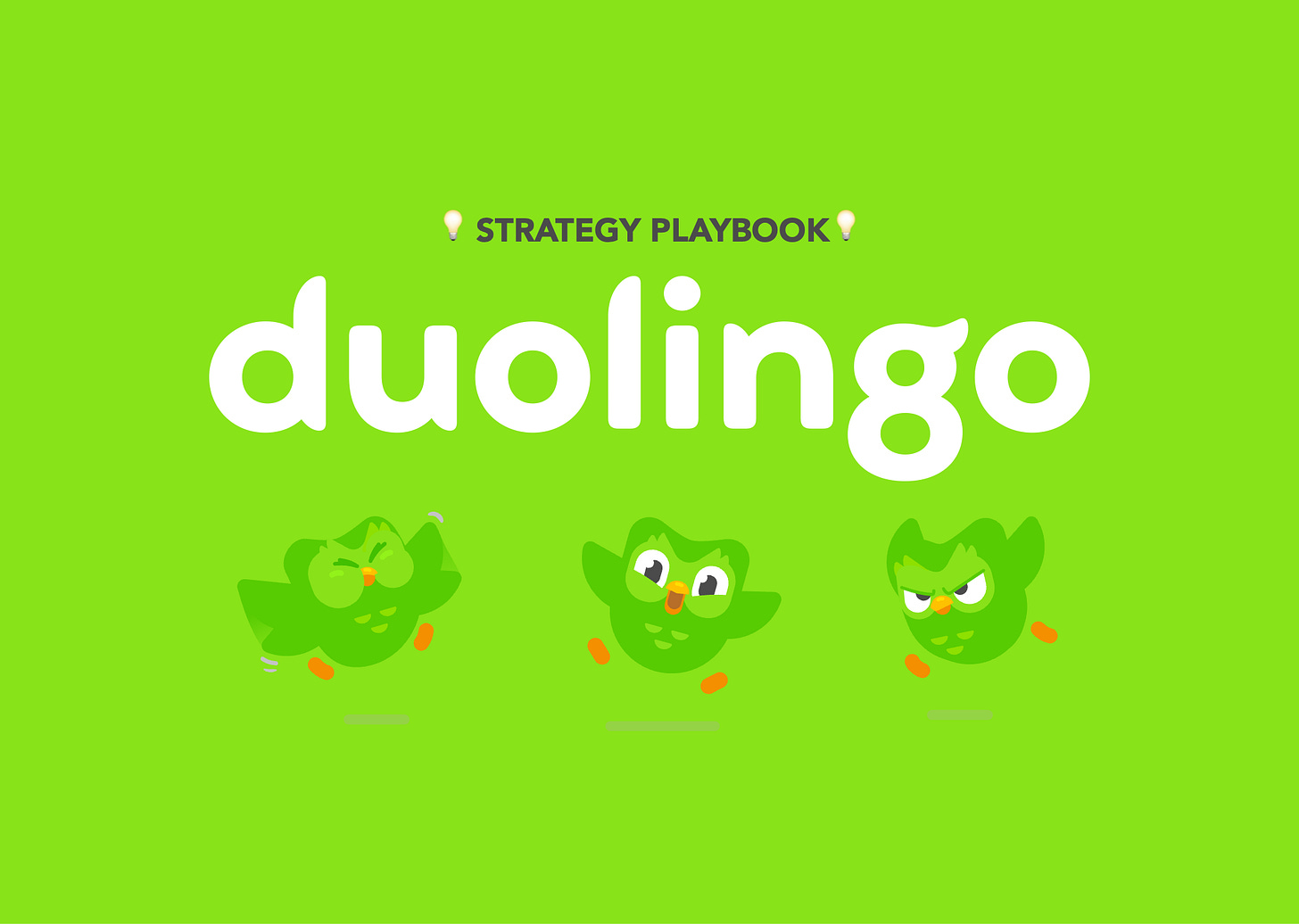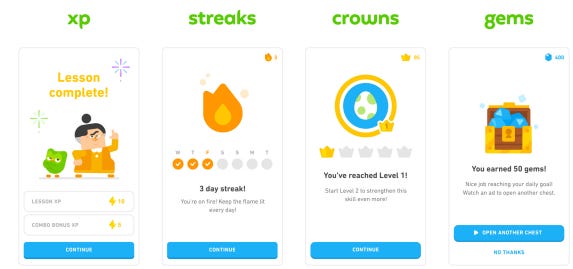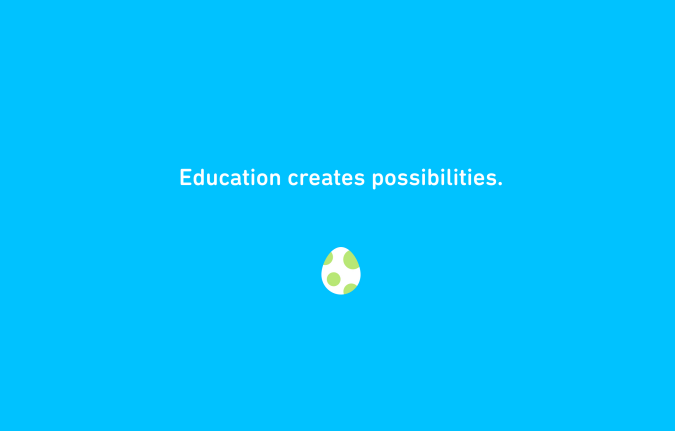A short strategy playbook behind the world’s fastest-growing companies.
In each edition you’ll get:
Game Plan: What is the Strategy?
The Recipe: How did it work?
Deep Dives: Where can I find out more?
Think of it as your go-to source for compact strategy insights, landing directly in your inbox.
Alright, let us get into it!
Game Plan
Strategy in a Nutshell
"Fun" isn't just for games—it's serious business. Companies are pouring money into figuring out how to make their products more enjoyable. Why?
Because fun creates a powerful cycle: happy users talk, and their chatter attracts more users, which then spurs more subscribers to your application. These additional proceeds can then be used for more research into making the app even more fun.
It's a self-feeding loop that's as profitable as it is delightful.
Duolingo took this "fun formula" and sprinkled it into something traditionally not-so-fun: learning.
They didn't stop with the app; they infused fun into their entire brand. But how did they turn a task as daunting as language learning into something so fun?
Let's dive in.
💡 Strategy Playbook: Incorporating fun into your strategy pays huge dividends.The Recipe
Three Ingredients for Success
1. Learning Gamified
Duolingo recreates fun in its app by borrowing a page from the most addictive playbooks out there: video games.
They transformed the app into a digital playground where learning feels more like playing.
Through gamification, they pull out some of the successful elements and dopamine hits from the world of gaming. Here are some examples:
Experience Points (XP): We like to gain things
Streaks: We do not like to lose things
Leaderboards: Competition
This keeps learners engaged and motivates them to spend more time learning.
Fun stat here: Duolingo has >3 million active users with streaks of more than 365 days 🤯
2. Unique Branding Campaigns
But the fun doesn't stop with the app. Duolingo's branding campaigns are a masterclass in creativity, reaching out and grabbing attention in the most unexpected places.
They focus on organic marketing and tap into trends and cultural zeitgeist which allows Duolingo to jump onto trending topics (Trendjacking) and become part of the conversation.
Some examples of their partnerships to promote their brand:
HBO, Game of Thrones: Launched a High Valyrain language course when the House of the Dragons series was released
Peacock, Love Language: Reality TV dating show where none of the contestants speak the same language
CBS, Star Trek: A Klingons language course for Star Trek fans
Netflix, Emily in Paris: Offering anyone named Emily a free month of premium membership
When people sign up for fictional language courses, 43% of them begin to study another language, allowing Duolingo to build not only a fun brand but also acquire more users.
3. Unhinged Marketing
When it comes to their social media content, Duolingo went beyond fun and became completely unhinged.
Their social media strategy focuses on:
Focusing on entertaining instead of selling
Hopping on trending topics
Engaging storytelling:
Ongoing feud with Google Translate
Obsession with Dua Lipa
etc…
This comes across as authentic and relatable to its audience, especially the younger demographics, and also massively captivated their followers on social media. (And also an absolute dream job for their marketing department folks…)
Bottom Line: The Economics of Fun
Making the whole Duolingo ecosystem fun creates incredible benefits for the economics of the business. With increased brand engagement with its multiple channels of fun and novelty, the cost of acquiring new customers is reduced dramatically.
About 80% of their users are acquired organically through word-of-mouth virality, which is incredible.
Deep Dives
Three resources for the Curious Minds
1. TED Talk by Duolingo Founder, Luis Von Ahn, on making learning addictive
“I hope for a future where screen time is not a bad thing, in which we can deliver high quality education to everyone, rich or poor, using a mobile phone.”
2. Duolingo S-1 (pre IPO) form that dives deep into their business mode
A deep dive into the Duolingo’s business model.
3. Discussion on the gamification on the Duolingo platform
Particularly interesting is how Duolingo has features that satisfy common player types: Achievers, Explorers, Socialisers and Killers.
And that’s it for this week!
If you enjoy my post, please consider sharing it or subscribing, see you in the next piece!
— Anthony 🚀










